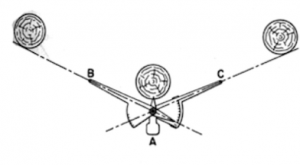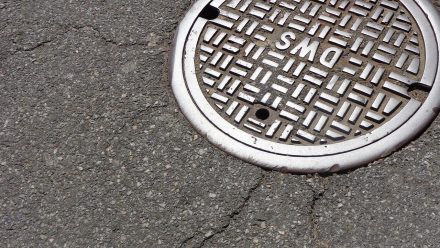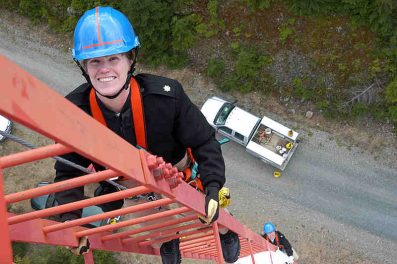In the United States, aerial plant components are essential for bringing communication and information technologies to communities. Properly designing and constructing an aerial plant comes down to a robust knowledge of guying and guy wires combined with specific configurations to cable types. Utilization of an indispensable tool such as the C Pull finder provides a precise, inexpensive means to obtaining proper guy design.
Use this guide for a broad understanding of the importance of proper guying and how to use a C Pull finder to measure the guy angle design.
Effectively Guying Poles
Properly guying a pole is an essential task, necessary for supporting the aerial infrastructure. Guy wires support poles and tower legs from moving, and without properly guying, supporting components are at the whim of bad weather, disastrous for heavily-loaded lines.
When designing guys, it is important to make sure the guy is designed at the correct angle. Ultimately, guying will depend on the height of the poles and the load of the of the aerial plant. The exact outcome of the guying is dependent on the thickness and weight of the guy wires being used.
Depending on the nature of the pull, guys can take on different names.
- An Anchor guy – The anchor guy does exactly what it suggests. It is a guy extending directly from a pole or guy stub to an anchorage in the ground. Caution – excavation for an engineered anchoring devises or pole stubs requires “One-Call or Call before you dig notifications specific to State 811 regulations”.
- A Side guy – is the name for a guy which extends perpendicularly from the main lead line that it supports.
- A Head guy – Unlike a side guy, which is transverse to the main lead line, a head guy remains in the same plane with the lead line that it supports.
- A Guy stub – is a smaller pole that bears the weight of the main pole.
- A Pole to stub guy – is a guy that connects the main pole and a guy stub.
Guys can also be placed between poles to transfer the load supported by one pole to another pole. However, when installing pole-to-pole guys the overhead and height above ground minimum clearance must be observed. In anticipating heavy storms, storm guys can be used to stabilize the line and consist of two opposing side guys. The C Pull finder can be used to measure the angle at which to guy poles supporting aerial plant.
How to Use a C Pull Finder
Using a C Pull Finder is a simple method of determining the pull, or the angle, in order to support or guy telephone poles and stub poles. The tool is nifty and accurate, and consists of three elements: a short arm (A) with a threaded point that screws directly into the telephone pole, two arms (B,C) that pivot, measure, and read the pull, and a gauge to measure guy rod and strand sizes while working.
To Measure Pull
Pull, measured in feet, is inscribed by a scale on arm C. As you move arm B, the interior indicator designates the correct pull along the scale on arm C. To measure while in the field, screw arm A directly into the corner telephone pole and align arm C to point at the corresponding pole. However, adjust arm C so that the line of sight is just tangent to the outside of the adjacent telephone pole. Now, point arm B at the opposite corresponding pole and again adjust so that the line of sight is tangent to the adjacent pole. The pointer on arm B indicates the pull at the corner, directly on the scale on arm C. If it is difficult to measure the pull above as described, measure the reflected pull using the C Pull Finder or use a taping method.
(Figure 1.1 A diagram that indicates how to measure pull using the C Pull finder)
To Bisect Angle
The C Pull Finder can also be used to easily bisect an angle and determine where an anchor or stub pole should be placed. To determine the angle bisect, there is an index mark inscribed on the base of arm C and a bisector scale inscribed on the base of arm B. Swivel arm C so that the index mark can be measured against the scale on arm B, using the corresponding pull that you just measured. The anchor or stub pole should be placed, or located, following the line of sight of the point of arm C. If the anchor or guy stub location is so far away that the sight from the pull finder to the stub pole can not be observed accurately, place a digging bar or a ranging rod on the bisector line, a few feet away from the pole.
(Figure 1.2 A diagram that explains how to bisect an angle using the C Pull finder)
The C Pull Finder is a must have tool for every telecom worker and will last indefinitely as it is made of nickel-plated brass. Similarly, the C Pull Finder has a gauge for measuring 6M, 10M, 16M, 25M strands, making it convenient to determine what construction materials to use. General Machine Products has been a leader in supplying the telecom industry since 1936. To discover more essential tools for your toolbox, visit us today at gmptools.com or call us at 215-357-5500.







